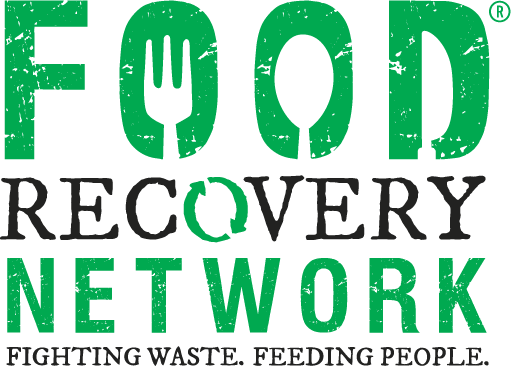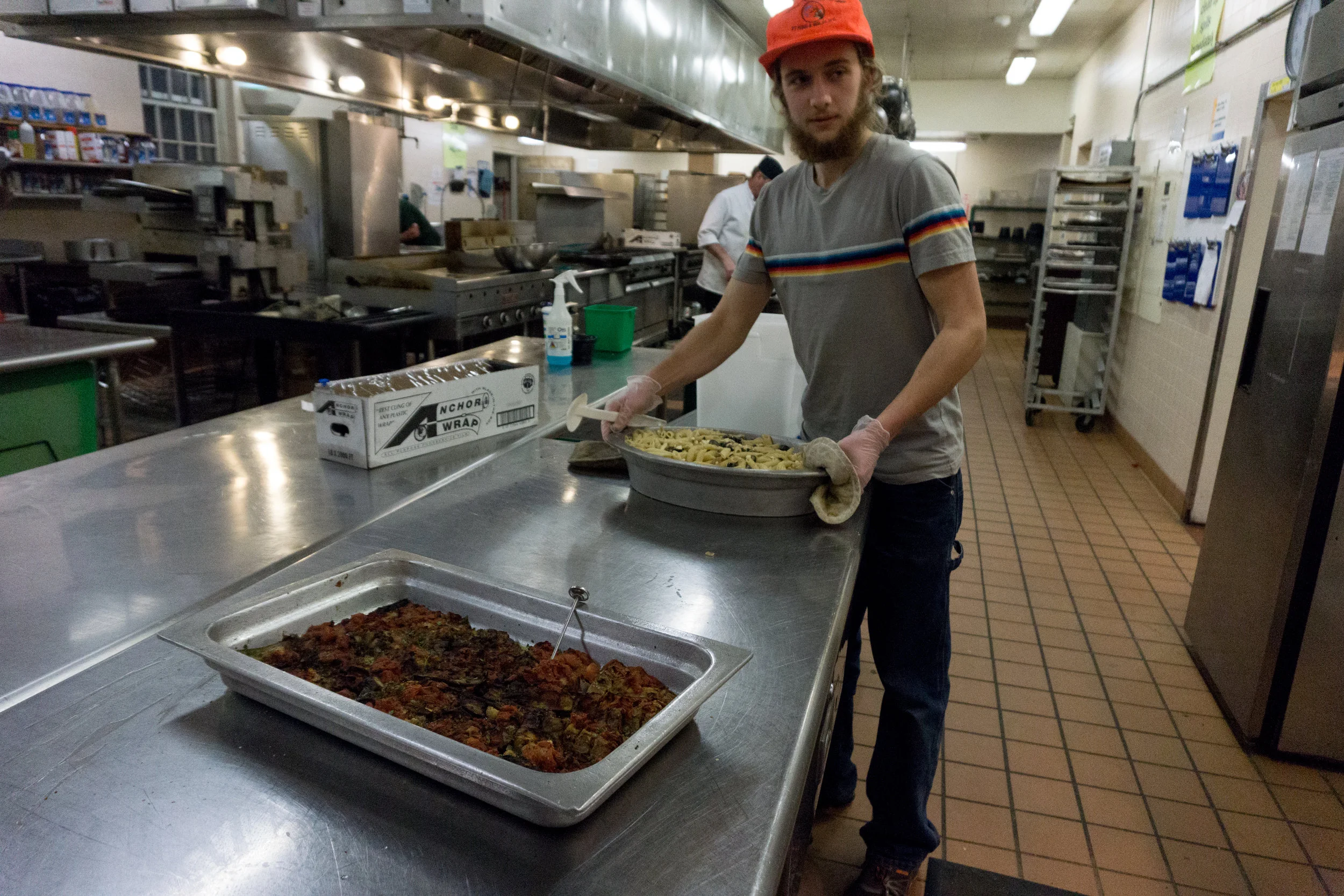Environmental Protection Agency's Food Recovery Hierarchy (https://www.epa.gov/sustainable-management-food)
Carl Diethelm, a 2017 graduate of Green Mountain College in Poultney, Vermont, founded his school’s FRN chapter as a junior in the spring of 2016. As one of the most sustainable colleges in the United States, Green Mountain College was already composting much of the uneaten food at the dining hall when Carl first started the chapter. But composting only goes so far, and it took Carl’s enhanced knowledge of the issue to come up with an even better idea for dealing with the leftover food. According to the Environmental Protection Agency’s food recovery
hierarchy, a chart of management strategies for what to do with wasted food, source reduction and feeding people are far more beneficial to both the environment and to society than composting or throwing food in a landfill. Through his work starting this FRN chapter, Carl realized that donating leftover prepared food could help Green Mountain dining become even more environmentally conscious and ethical by moving three steps higher on the food recovery hierarchy. He says, “I was known as ‘Compost Carl’, but because of my experience with FRN, I realized it is much more fulfilling to get food to people or animals, or prevent it from being over-produced in the first place.”
This experience of finding an even better solution to a problem that many thought was already solved encouraged Carl to pursue a career in organic waste diversion after graduation. Carl now works at the GMC dining hall as the food recovery specialist and server, working to help his school achieve zero-waste status, while continuing to support GMC’s FRN chapter. He also serves as Outreach Coordinator for the Rutland County Solid Waste Management Entity, a materials management planning and administration organization. He contacts businesses, schools, and other organizations directly to discuss proper disposal of their unused materials. For example, the state of Vermont recently passed a Universal Recycling Law that requires everyone to divert food scraps from the landfill by 2020, and the Solid Waste Districts are charged with making sure everyone knows this law exists and ensuring they are aware of different options available to comply with it. Days spent fighting waste and feeding people, Carl says, “is very rewarding to me, and I see myself continuing in these career areas for a long time,” he said.
His favorite FRN memory is his chapter’s first community meal at the local Methodist Church, which had more than 70 attendees. “It was nerve-wracking to try serving all those people in two hours from a small kitchen, but the reward was a great feeling of accomplishment.” To current FRN students, Carl advises: “Take it slow. While it can be disheartening to see how much food is wasted every minute, rushing to start new programs or extend current food recovery projects can sometimes result in burn-out and maybe a loss of food safety. Start new relationships with small pilot programs, and use the network to reach out to others if you have any questions.”
Carl also encourages students to keep an open mind. “Some people might not be excited about certain foods they receive, but listen to them with an open heart and just do your best to use the feedback in positive ways,” he says. “While one of the main goals of food recovery is to help prevent food insecurity, it is not a solution to reducing poverty. Recognizing that others might be less privileged and have different foods they are raised eating will allow you to step back and remember that we are all human with our own unique life experience.”
The FRN Alumni Network is powerful because passionate alumni like Carl are out in the workforce and in communities all across the country. Finding real solutions to real problems, even when it’s difficult, is what FRN leaders do best. Carl, thanks for all you do and keep up the great work!
Interested in being part of our alumni network? Fill out our survey to stay connected here, and email alumni@foodrecoverynetwork.org or Sarah Diamond, our Alumni Programs VISTA, at sarah.diamond@foodrecoverynetwork.org with any inquiries you have. We can’t wait to hear from you!

















